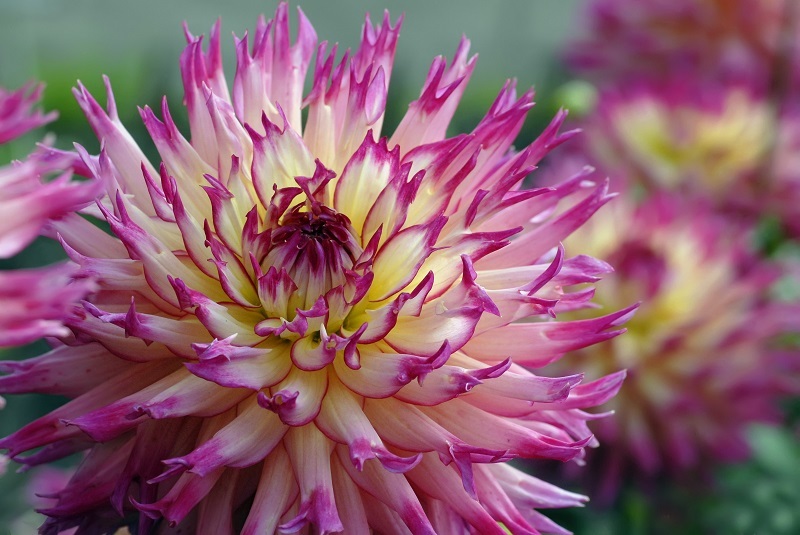Unlock the Secrets to Thriving Orchids with This Complete Guide
Orchids have captivated plant lovers for centuries with their exquisite beauty and range of vibrant colors. Yet, many consider them difficult to care for. The truth is, growing thriving orchids is easy -- when you understand their unique needs. Whether you are a beginner or seasoned gardener, this full-length, expertly crafted guide reveals the secret to thriving orchids and turns your home into an orchid paradise.
Understanding Orchids: An Overview
Before you nurture healthy, blooming orchids, it's crucial to know the basics of this diverse plant family. With more than 25,000 naturally occurring species and over 100,000 hybrids, orchids are among the largest of all plant families. Common varieties include:
- Phalaenopsis (Moth Orchids) - Ideal for beginners and widely available
- Dendrobium - Known for stunning sprays of flowers
- Cattleya - The "Queen of Orchids," famous for large and fragrant flowers
- Oncidium - Also called "Dancing Ladies" due to their unique blooms
Orchids naturally grow on trees and rocks in tropical environments. Understanding their native habits helps you recreate optimal conditions, ensuring your orchids not only survive, but thrive.

The Fundamentals of Orchid Care
Light Requirements for Thriving Orchids
The right lighting is paramount for vibrant, blooming orchids. Most orchids require bright, indirect sunlight. Too little light results in poor blooming, while too much can scorch leaves.
- Phalaenopsis prefer a north or east-facing window.
- Dendrobium and Cattleya appreciate brighter windows, filtered with sheer curtains.
- Yellow leaves typically indicate excessive sunlight; dark green leaves signal lack of light.
- Artificial grow lights with full-spectrum LEDs can supplement natural light.
Watering for Optimal Orchid Health
Proper watering is often viewed as the key secret to growing thriving orchids. Overwatering is the most common cause of orchid decline. These tips will help you keep your orchids happy and healthy:
- Water most orchids once a week in winter, and twice a week in summer.
- Let the potting medium dry slightly between waterings.
- Morning watering is best, allowing foliage to dry during daylight.
- Use tepid, distilled, or rainwater -- avoid softened or chlorinated tap water.
Tip: Insert your finger an inch into the potting mix -- if it's dry, it's time to water!
Humidity: Why Orchids Love It
Orchids are accustomed to humid rainforest conditions. Maintaining 40-60% humidity ensures healthy leaves and prolific flowering. Here's how:
- Place orchid pots on a pebble tray filled with water, ensuring the pot is above the waterline.
- Mist leaves with distilled water in the morning, never late in the day.
- Use a small humidifier in drier climates or during winter months.
Choosing the Best Potting Medium
Orchids do not grow in regular soil. Instead, they need a chunky, well-draining medium that mimics their natural habitat:
- Bark-based mixes are best for most orchids like Phalaenopsis and Cattleya.
- Sphagnum moss holds more moisture for species needing extra humidity.
- Leca (expanded clay pellets) are gaining popularity for semi-hydroponic setups.
Repot your orchids every 1-2 years to refresh the medium and inspect root health.
Advanced Orchid Care: Feeding and Fertilization
When and How to Fertilize Orchids
For luxuriant, thriving orchids, fertilize regularly but not excessively. The motto is "weakly, weekly":
- Use a balanced, water-soluble orchid fertilizer (20-20-20) at 1/4 strength every week when orchids are growing actively.
- Reduce feeding to once a month during wintertime or dormancy.
- Flush pots with pure water every fourth week to clear fertilizer salts.
Over-fertilizing can burn roots and inhibit blooms -- always err on the side of caution!
Essential Nutrients for Orchids
Orchids require the same elements as other plants: nitrogen (N) for leaf growth, phosphorous (P) for roots and flowers, potassium (K) for overall vigor. Micronutrients like magnesium and calcium help prevent deficiencies, evident as yellowing or spotted leaves.
Potting and Repotting Orchids
Repotting is vital to sustaining thriving orchid plants. Update the medium every 1-2 years, or when you notice:
- Roots growing out of pot holes
- Decay or foul smell from the medium
- Salt buildup or reduced drainage
- Slowed growth or yellowing leaves
Choose a clear plastic pot to monitor root health and moisture levels. Always repot after the flower spike dies back, not during active blooming.
Mastering Orchid Flowering: From Spikes to Stunning Blooms
How to Encourage Your Orchids to Bloom
Orchid blooms are the hallmark of excellent care. To coax flowers year after year:
- Provide adequate light -- especially during winter.
- Maintain day-night temperature drops of 10-15?F (5-8?C) to signal the plant to bloom (critical for Phalaenopsis and Cattleya).
- Use high-phosphorous "bloom booster" fertilizer during spike formation.
- Avoid moving the pot once a flower spike appears, as sudden changes can halt blooming.
Dealing with Spent Blooms: Prune for Continued Growth
After the orchid's flowers have faded:
- Snip off depleted stems just above the nearest node for Phalaenopsis. This can trigger a second flush of blooms!
- For other orchids like Cattleyas, cut flower stems down at the base after blooming.
- Remove yellowing or diseased leaves with sterilized scissors to prevent infection.
Troubleshooting Common Orchid Problems
Spotting and Solving Orchid Pests
Despite their resilience, thriving orchid plants can sometimes fall victim to pests:
- Aphids and scale: Remove by dabbing with rubbing alcohol or using insecticidal soap.
- Spider mites: Mist the plant to increase humidity and wipe leaves clean.
- Mealybugs: Remove with a cotton swab dipped in alcohol and treat with neem oil.
Diseases: Prevention and Treatment
Rot and fungal infections are most often caused by overwatering and poor ventilation:
- Ensure the pot and medium drain well.
- Remove affected roots and leaves with sterile tools.
- Allow pots to dry fully between waterings.
- Consider using a bio-fungicide for persistent fungal issues.
Recognizing Nutrient Deficiencies
- Yellowing leaves may signal nitrogen or magnesium deficiency.
- Purplish leaf edges suggest phosphorous shortage.
- Apply a complete orchid fertilizer to restore balance.
Orchid Myths and Misconceptions
- Myth: Orchids are hard to grow.
Reality: With the correct care and environment, orchids are easy to cultivate and maintain. - Myth: Orchids must be watered with ice cubes.
Reality: Most orchids dislike cold and prefer room-temperature water just like plants in the wild. - Myth: Orchids only flower once.
Reality: With good maintenance, many orchids can bloom multiple times each year!
Top Tips for Achieving Thriving, Long-Lived Orchids
- Observe your plant -- let the leaves, roots and flowers tell you what they need.
- Be patient -- orchids reward consistent, mindful care.
- Keep records of watering, fertilizer, blooming, and pest treatments.
- Avoid harsh chemicals and only use gentle, orchid-safe products.
- Join orchid forums or local societies to share experiences and learn from passionate growers.

Decorating with Orchids: Beauty Beyond Blooms
Orchids are more than just houseplants - they're living works of art. Display thriving orchid flowers in:
- Elegant windowsill arrangements
- Hanging baskets or terrariums for a modern look
- Orchid walls or dedicated indoor gardens
- As gifts for special occasions, thanks to their symbolism of love and luxury
The right orchid can elevate any interior and provide years of stunning displays when properly cared for.
Conclusion: Your Journey to Thriving Orchids Starts Here
Unlocking the secrets to thriving orchids is a rewarding experience open to everyone. By mastering light, water, humidity, nutrition, and proper potting, you'll witness your orchids burst into vivid, healthy blooms year after year. Remember -- success comes down to understanding and mimicking their natural habitat. Armed with knowledge from this complete orchid care guide, you're well on your way to cultivating some of the most stunning and resilient plants in the world. Happy growing!
Ready to put these secrets into practice? Share your orchid journey and tips in the comments below!
